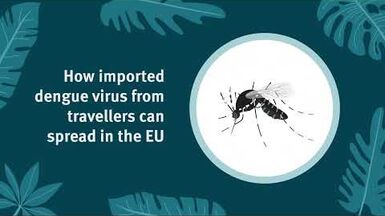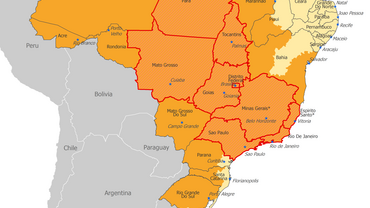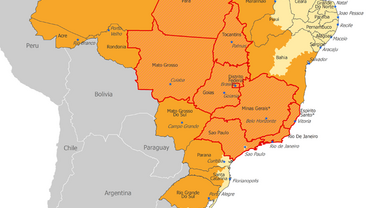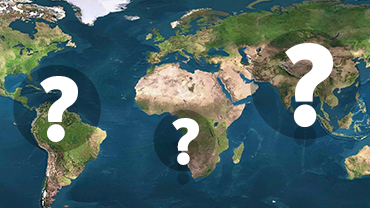Epidemiological update: Yellow fever outbreak in Brazil, 5 May 2017
Yellow fever is a mosquito-borne viral infection present in some tropical areas of Africa and South America. On 6 January 2017, Brazil reported an outbreak of yellow fever that started in December 2016 and that has been ongoing since then. Bolivia, Colombia, Ecuador, Peru and Suriname have also reported cases of yellow fever in 2017.
Weekly summary
Between 20 and 27 April 2017, Brazil has reported 93 additional cases of yellow fever (59 suspected and 34 confirmed). The additional confirmed cases occurred in Espírito Santo (18), Minas Gerais (8), São Paulo (7) and Rio de Janeiro (1).etween 20 and 27 April 2017, Brazil has reported 93 additional cases of yellow fever (59 suspected and 34 confirmed). The additional confirmed cases occurred in Espírito Santo (18), Minas Gerais (8), São Paulo (7) and Rio de Janeiro (1).
In Brazil, several media have reported vaccine shortages (for example in Campinas), but these claims have been dismissed by authorities. Canada and the United States have acknowledged a shortage of yellow fever vaccines due to the relocation of the American vaccine's production site to a new facility. As a result, once the current stockpile is exhausted, no additional product will be available until mid-2018. In Canada, the use of fractional dose has been temporarily recommended. In the US, the use of the European vaccine has been approved by the US Food and Drug Administration (FDA). Some United Kingdom travel clinics have also reported shortages of the European vaccine.
Media have reported that several monkeys have been killed by people scared by the propagation of yellow fever. This could put people at greater risk by hampering sentinel surveillance.
Epidemiological summary
Brazil:
Between 6 January and 27 April 2017, Brazil has reported 1 542 cases of yellow fever (827 suspected and 715 confirmed), including 279 deaths (39 suspected and 240 confirmed). The case-fatality rate is 18.1% overall and 33.6% among confirmed cases.
States reporting suspected and confirmed autochthonous cases:
- Minas Gerais has reported 707 cases (228 suspected and 479 confirmed), including 182 deaths (17 suspected and 165 confirmed).
- Espírito Santo has reported 541 cases (338 suspected and 203 confirmed), including 74 deaths (13 suspected and 61 confirmed).
- São Paulo has reported 152 cases (135 suspected and 17 confirmed), including nine deaths (two suspected and seven confirmed).
- Rio de Janeiro has reported 35 cases (24 suspected and 11 confirmed), including five deaths (two suspected and three confirmed).
- Pará has reported 17 cases (13 suspected and four confirmed), including four confirmed deaths.
- Tocantins has reported four cases (three suspected and one confirmed).
States reporting suspected autochthonous cases:
Fourteen states have reported 86 suspected cases: Goiás (25, including 2 fatal), Paraná (16, including 1 fatal), Bahia (10), Rio Grande do Sul (6), Rondônia (6), Santa Catarina (5), Distrito Federal (4, including 2 fatal), Mato Grosso (3), Amapá (2), Maranhão (2), Mato Grosso do Sul (2), Piauí (2), Amazonas (1), Ceará (1) and Paraíba (1).
Other countries in South America:
From the beginning of 2017 to 25 April, five other countries have reported suspected and/or confirmed cases of yellow fever: Peru (13), Colombia (2), Bolivia (1), Ecuador (1) and Suriname (1).
Sources: Brazil MoH | PAHO | WHO vaccination recommendations
ECDC assessment
The ongoing outbreak should be carefully monitored, as the establishment of an urban cycle of yellow fever would have the potential to quickly affect a large number of people. EU/EEA citizens who travel to, or live in, areas where there is evidence of yellow fever virus transmission should check their vaccination status and obtain medical advice about being vaccinated against yellow fever.
In Europe, Aedes aegypti, the primary vector of yellow fever in urban settings, is present in Madeira. Recent studies have shown that Aedes albopictus can potentially transmit the yellow fever virus. However, the risk of the virus being introduced into local competent vector populations in the EU through viraemic travellers from Brazil is considered to be very low, as the current weather conditions in Europe are not favourable for vector activity.
Actions
ECDC closely monitors this event in collaboration with the World Health Organization. ECDC published its updated rapid risk assessment on 14 April 2017. ECDC is also producing epidemiological updates and a map for travel advice.







